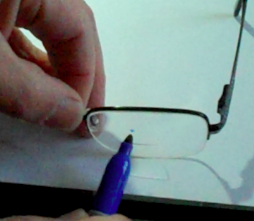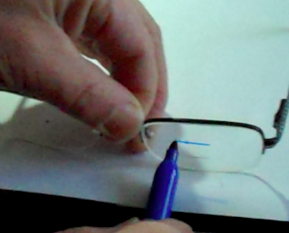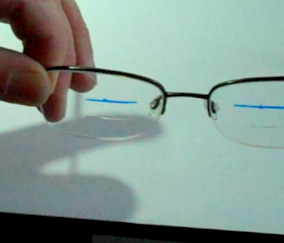Precise segment and progressive fitting heights, first time, teach patients that you understood their vision needs. Be sure to consider the fitting height of their old glasses, their posture, work tasks, leisure and driving needs. Separate the measurements for indoor and outdoor eyewear. They can be different.
Ask questions to discover how well their old glasses worked for them. One height will meet most but can’t work for all needs so learn the activities for which the glasses will be used most often or where the most comfort is required. Counsel that another pair of glasses, for those other tasks would be better.
For example, a pair of progressives for all day wear delivers vision at all needed distances but probably won’t work as well for reading in bed. A pair of single vision readers or near variable focus lenses would work better.
To measure multifocal fitting heights, sit opposite the patient, adjust the frame so that it is straight and comfortable for the wearer. Then, ask the patient to put on the glasses so they place them where they are comfortable wearing them. Then, with your eyes at the same height as the patients dot the fitting height with a marking pen. For bifocals and trifocals, the starting points are top of lower lid for bifocals and top of lower pupil margin for trifocals. For progressives it is pupil center.
Next, remove the glasses and draw a straight line (about an inch) across the dot. Place the pen against the table edge, dot against the pen and slide the glasses right and left. See the illustration below:



Ask the patient to put the glasses back on and ask them to stand and look out a window or across the office to something more than 20 feet away. I find that if I place my hand on the patient's shoulder they assume a more relaxed and natural posture. Stand to the side and just in front of the patient, then view the line drawn on the lens. For progressives the patient should be looking through the line, for bifocals and trifocals above it.
For bifocals and trifocals, hand the patient a reading card and as they look down, it is easy to see if they look below the line. Check it again while sitting. In bifocals and trifocals, it can also be confirmed by placing a piece of scotch tape across the line. The tape should be completely in the way for reading and out of the way for distance and walking.
Watch a patient’s posture as they walk with you around the office. Adjust segment height as needed. Also, a patient’s posture changes as they age so take that into consideration. Never assume that the previous height will be good for the new glasses.












